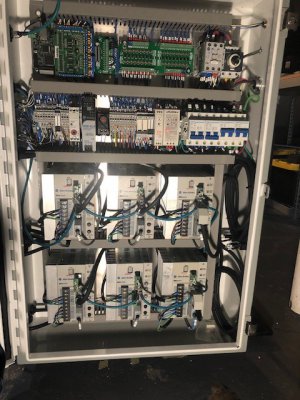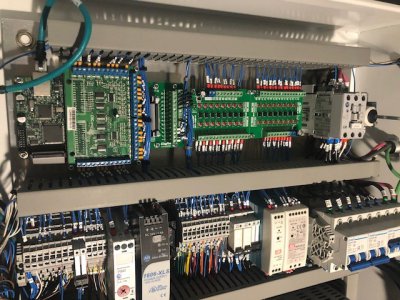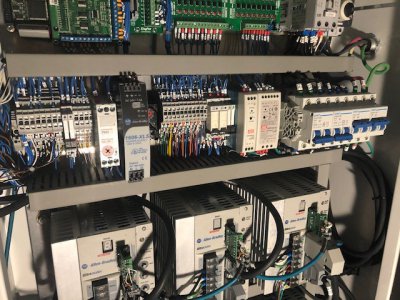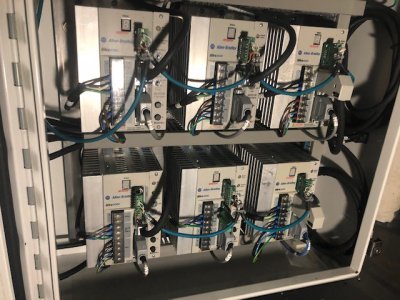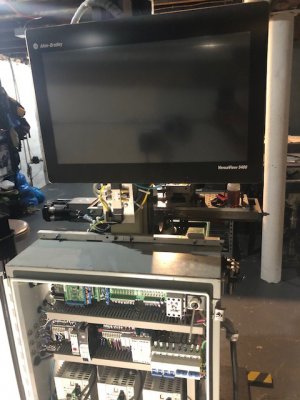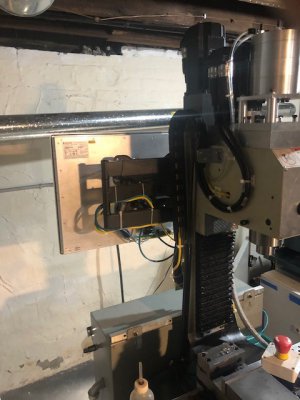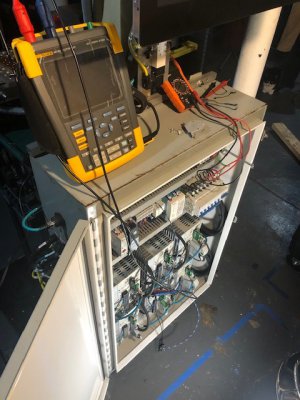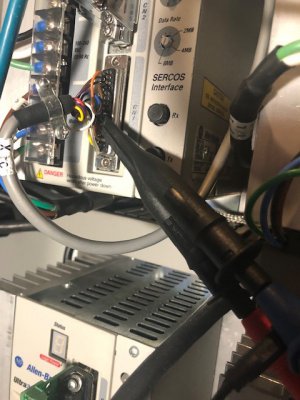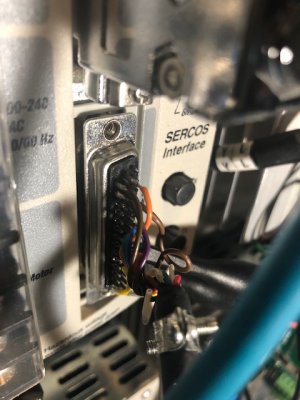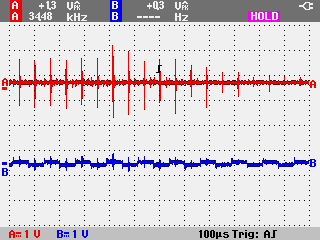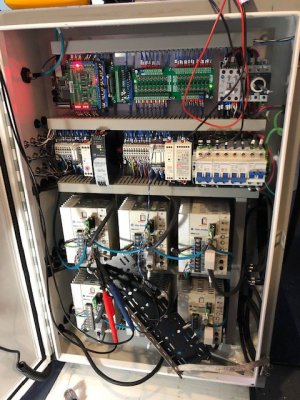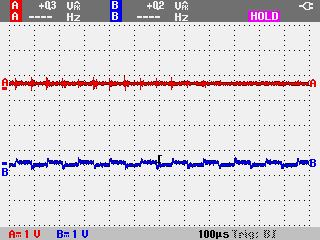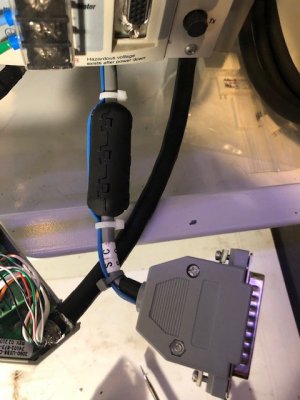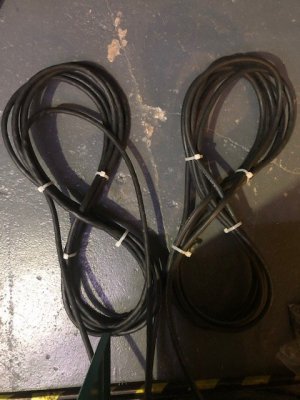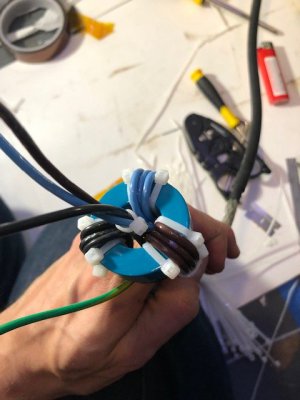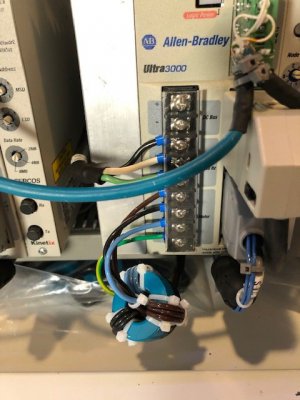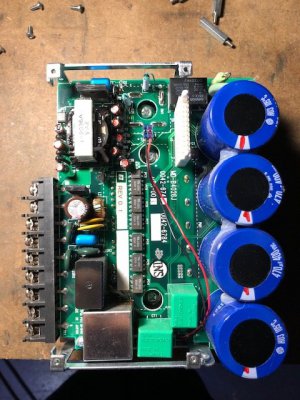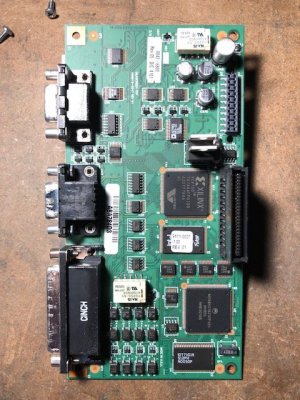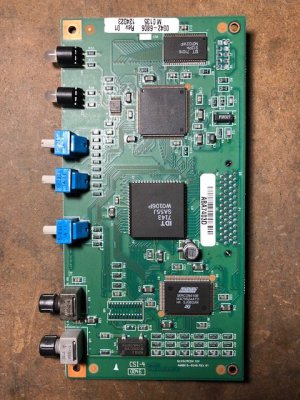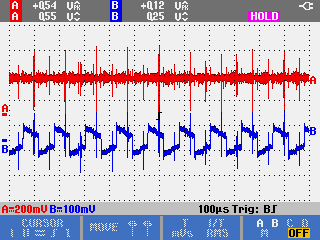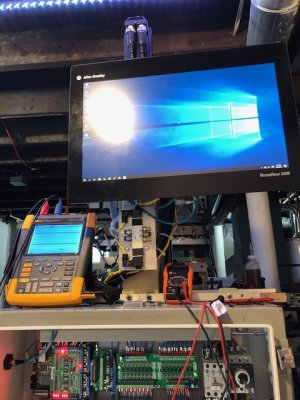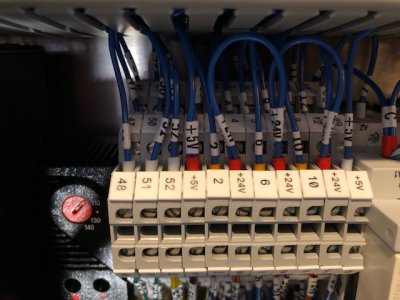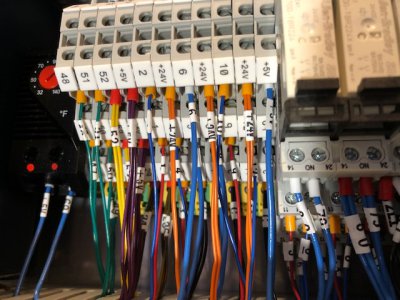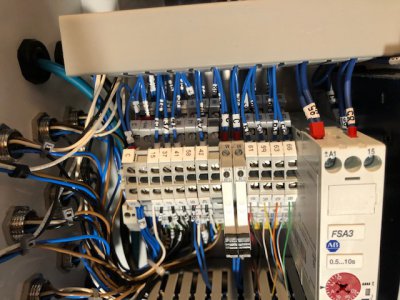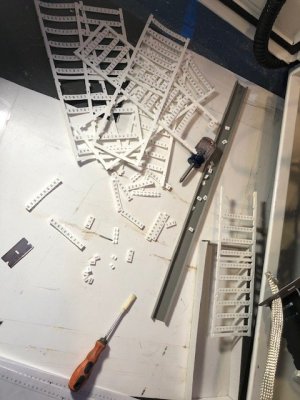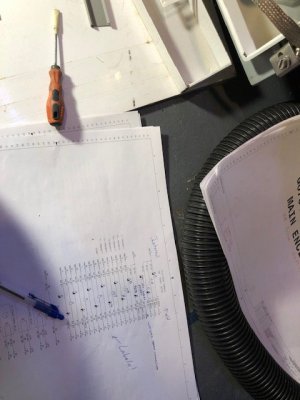- Joined
- Mar 26, 2018
- Messages
- 2,724
While I had the ballscrew out on the table, I figured I would try repacking it like I did with my X and Y axes. I had a cardboard lid with finger cutouts that made a great container to catch the balls.
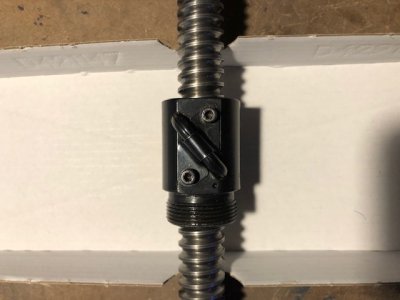
Removing the ball track.
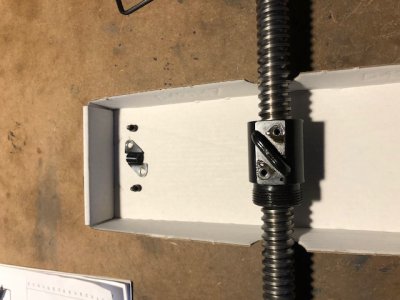
I ended up removing all the balls, counting and measuring them individually. They were 0.1257" within a tenth or two. I decided to replace half of them with new balls that measured .1278" alternating every other ball.
This screw went from freewheeling loose to quite tight with this change. I can rotate the nut by hand, but not by pinching it between my thumb and index finger. This may shorten the life of the screw, but I know the motor (2.25 HP) won't have problems moving it. There is zero backlash in the screw now. If the screw gets worn, I will be fine replacing it with a better one.
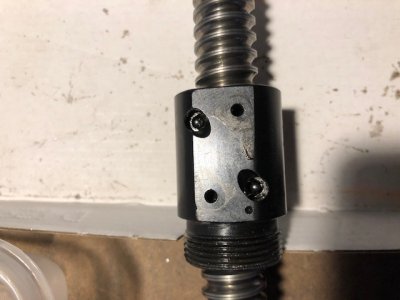
The final balls (and a bit of extra space) are packed into the return tube with some bearing grease, then reassembled.
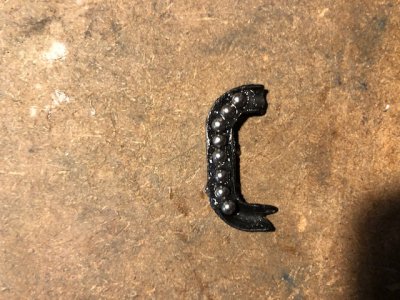
The ballnut and new block are reassembled onto the machine. Thanks to a new front facing access hole, the locking screw can be removed without removing the computer and monitor mount in the future.
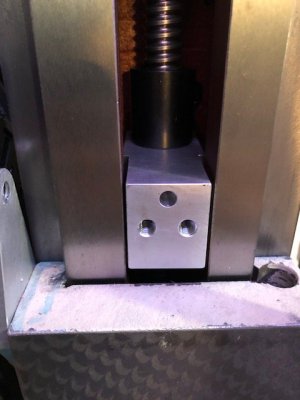
New bolts from Home Depot (ugh so expensive) engage much more of the threaded hole and were torqued tight with Loctite. The other 4 bolts are longer than the stock bolts and hold down the Z axis bearing block at the top of the column.
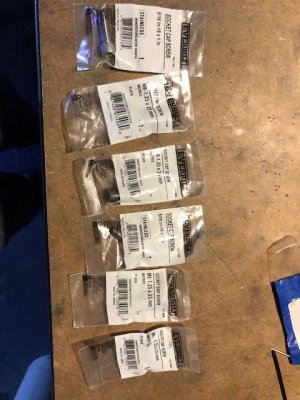
Machine is coming back together. About 4 hours into it at this point.
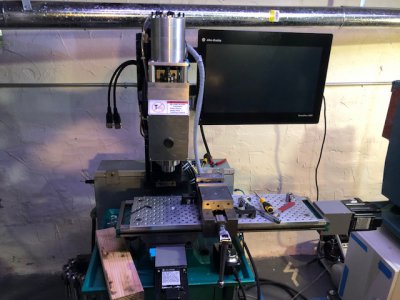
New bolts ended up going here.
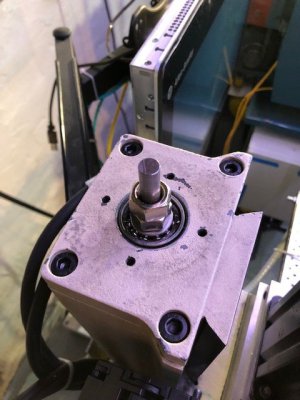
While I was working on everything, I decided to check on the state of the spindle belt. Absolutely zero dust since the first issues I had with it. Happy about that.
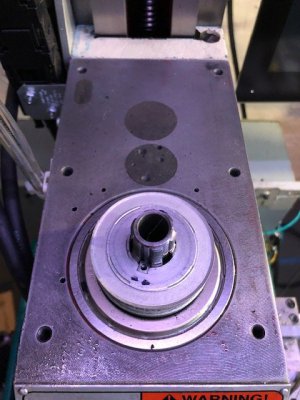
A little black grease/oil is thrown around the wall of the spindle housing. Not sure where it is coming from. Shouldn't be a problem.
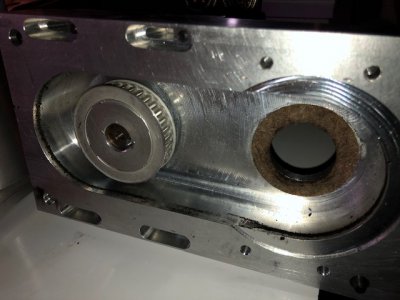
Finally I retuned the Z axis servo. With the tighter screw, I could set the servo gains much higher than I could before without causing instability.
I started with the gains in the image below and got the gains after turning to:
-P = 400
-I = 125
-D = 0
-Kp = 23.00
-Kd = 0.00
-Kvff = 100
-Ki = 2.25
I was testing a 5" move at max accelerations and speed for the axis. Before tuning the motor would reach .008" position error during the very aggressive acceleration moves and I got that down to .0006" after tuning. During constant velocity, static positioning, or less aggressive moves (i.e. normal machining) then error was less than .0001" at the motor shaft. These values don't show mechanical errors of the machine, but it is a great starting point.
I do notice with the much tighter gains that the noise from each motor step (really the pulse from the ESS) is much louder than before. I may roll these tuning gains back just a touch purely to reduce this noise.
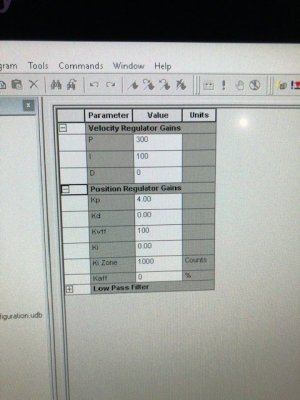

Removing the ball track.

I ended up removing all the balls, counting and measuring them individually. They were 0.1257" within a tenth or two. I decided to replace half of them with new balls that measured .1278" alternating every other ball.
This screw went from freewheeling loose to quite tight with this change. I can rotate the nut by hand, but not by pinching it between my thumb and index finger. This may shorten the life of the screw, but I know the motor (2.25 HP) won't have problems moving it. There is zero backlash in the screw now. If the screw gets worn, I will be fine replacing it with a better one.

The final balls (and a bit of extra space) are packed into the return tube with some bearing grease, then reassembled.

The ballnut and new block are reassembled onto the machine. Thanks to a new front facing access hole, the locking screw can be removed without removing the computer and monitor mount in the future.

New bolts from Home Depot (ugh so expensive) engage much more of the threaded hole and were torqued tight with Loctite. The other 4 bolts are longer than the stock bolts and hold down the Z axis bearing block at the top of the column.

Machine is coming back together. About 4 hours into it at this point.

New bolts ended up going here.

While I was working on everything, I decided to check on the state of the spindle belt. Absolutely zero dust since the first issues I had with it. Happy about that.

A little black grease/oil is thrown around the wall of the spindle housing. Not sure where it is coming from. Shouldn't be a problem.

Finally I retuned the Z axis servo. With the tighter screw, I could set the servo gains much higher than I could before without causing instability.
I started with the gains in the image below and got the gains after turning to:
-P = 400
-I = 125
-D = 0
-Kp = 23.00
-Kd = 0.00
-Kvff = 100
-Ki = 2.25
I was testing a 5" move at max accelerations and speed for the axis. Before tuning the motor would reach .008" position error during the very aggressive acceleration moves and I got that down to .0006" after tuning. During constant velocity, static positioning, or less aggressive moves (i.e. normal machining) then error was less than .0001" at the motor shaft. These values don't show mechanical errors of the machine, but it is a great starting point.
I do notice with the much tighter gains that the noise from each motor step (really the pulse from the ESS) is much louder than before. I may roll these tuning gains back just a touch purely to reduce this noise.



